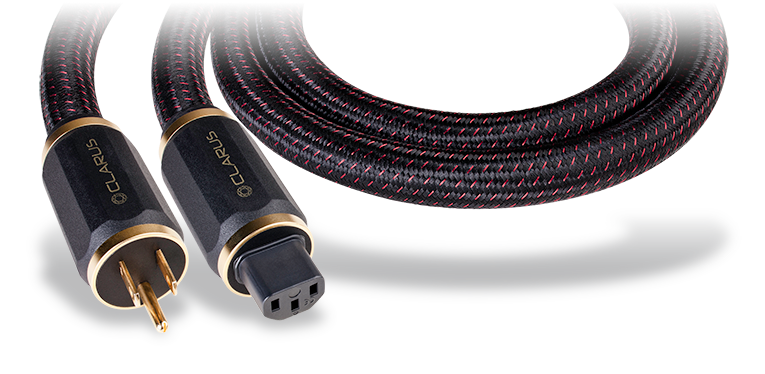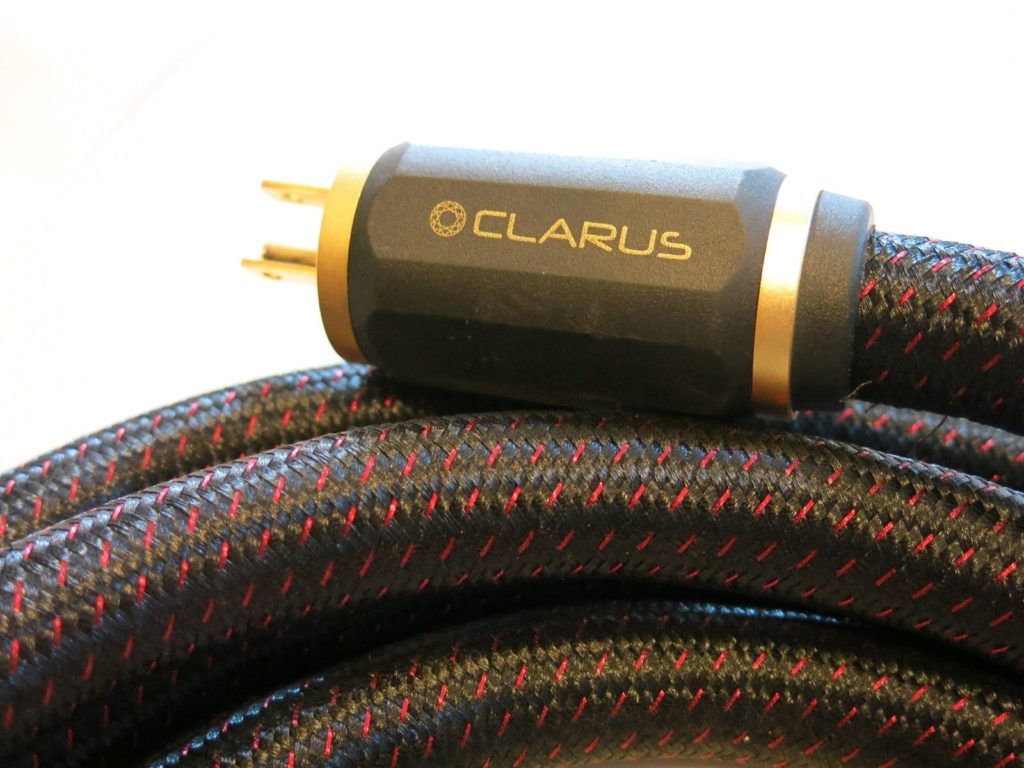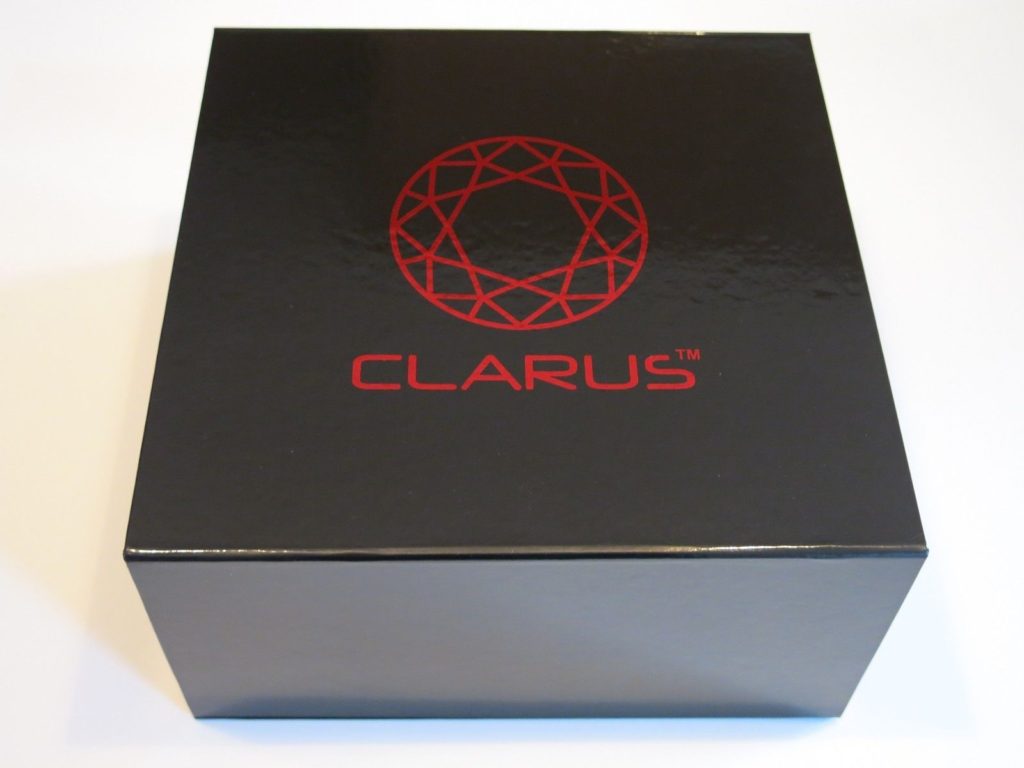 I have spent the last few months using these special cables from Clarus Cables from Gordon J. Gow Technologies. Established in 2011 in Orlando, Florida, Clarus Cables creates cables intended for high-end, two-channel audio systems. According to their literature, all Clarus products are developed from scratch using no off-the-shelf parts, and every cable in the Clarus family incorporates a host of recently patented or patent-pending technologies. They are designed by well-known cable designer Jay Victor. Victor shared with me by email a little of his story.
I have spent the last few months using these special cables from Clarus Cables from Gordon J. Gow Technologies. Established in 2011 in Orlando, Florida, Clarus Cables creates cables intended for high-end, two-channel audio systems. According to their literature, all Clarus products are developed from scratch using no off-the-shelf parts, and every cable in the Clarus family incorporates a host of recently patented or patent-pending technologies. They are designed by well-known cable designer Jay Victor. Victor shared with me by email a little of his story.
“I am a musician and life-long music fanatic. My earliest childhood memories are of riding around in my father’s car listening to music on the radio. I think this probably pre-conditioned me into being fixated on music. I took piano lessons at the age of 5, but eventually gravitated to electric guitar and then bass at around 13. I think my dad’s preference for pop music had its eventual impact, although a childhood spent watching Bugs Bunny cartoons gave me an acute appreciation for classical music, and playing Bass in High School Dance Band led me to Jazz. I used to sneak a transistor radio under my pillow so I could listen to AM Top 40 radio until late into the night. Many audiophiles tell this same story, so I think we all share a similar orientation.
“Extreme interest in music resulted in attending hundreds of live concerts, including subscriptions at Carnegie Hall before they ruined it, and I believe live music must be the ultimate reference standard. The main point of all of this is that if you spend a lifetime listening to, and playing music, it is difficult to avoid developing a sensitive ear. Also, being a technically-minded person, and an engineer, it is inevitable that Hi-Fi equipment would become a major preoccupation. This is what goes into the cables that I design. A relentless pursuit of perfection in reproducing the sound of real music.”

Description and Design
I’m not going to take the normal amount of time describing the Clarus Crimson cables and their design because Jay Victor has narrated nine videos on just these things. You can view them by clicking here. I will say that the cables have a very high build quality, look great and are not too stiff or heavy for me to choose to use them. I should also mention that every Clarus cable other than their digital coax and USB cables use three unique conductors, each made from oxygen-free Pure Copper by Ohno Continuous Casting (PCOCC).
Listening with the Power Cables in My System
When I was sent the Clarus Crimson cables, they asked that I start by adding the power cables to my system, then the speaker cables and finally the interconnects. I agree with Clarus. I think that the most important cables in a system are the power cables. When I first heard of audiophile power cables it seemed to be a waste of money to me, but the last 20 years of experience has changed my mind. I now feel the first place I would spend money on cables would be power cables and a high-quality power distributor. And, incidentally there will be a Part 3 of this review for a full flight of Clarus Cables with my system.
I recently reviewed the entry-level Clarus Aqua power cables where I described them as sounding relaxed with beautiful rich harmonics. They allowed my system to have a wonderful low-end harmonic with real tonal colors. The midrange was sweet and as smooth as velvet. The top end sounded well extended and silky smooth. Voices and instruments had beautiful timbre and bloom like a 300B tube amp. The decay and wood sound of a cello or standup bass was simply beautiful. I did fault them compared to much more expensive power cords. They fell short in rhythm, drive and detail. As good as they were in reproducing decay, they dull the leading edge just a bit.
 So, how did the Crimson power cables allow my system to sound, compared to their Aquas? Like the Aquas the Crimson power cables are full-sounding. They are neither forward sounding nor recessed. They allowed me to hear more detail than the Aquas, but they were in no way overly detailed. I did not find the Crimson power cables to inhibit, impede or restrict the dynamics. They did lack the last word in bass drive and rhythm but not by much. They had blacker and quieter background in my system than did the Aquas, and for that matter, they bettered some much more expensive cables in this area. Another thing the Crimson power cords did very well is they helped my system sound less strained at loud volumes.
So, how did the Crimson power cables allow my system to sound, compared to their Aquas? Like the Aquas the Crimson power cables are full-sounding. They are neither forward sounding nor recessed. They allowed me to hear more detail than the Aquas, but they were in no way overly detailed. I did not find the Crimson power cables to inhibit, impede or restrict the dynamics. They did lack the last word in bass drive and rhythm but not by much. They had blacker and quieter background in my system than did the Aquas, and for that matter, they bettered some much more expensive cables in this area. Another thing the Crimson power cords did very well is they helped my system sound less strained at loud volumes.
So, the real question is how do the Clarus Crimson power cables compare to some of my favorite cables in the $1,500 to $4,500 price range from Audience, Sablon, and WyWires. The Clarus Crimson power cables hold their own, but they hold their own better than I expected. The Audience power cables are my favorite of the bunch. The Au24 powerChords also expanded my system’s overall dynamics, and micro-dynamics compared to the others. They also have a more coherent soundstage and allowed my system to have the best vertical soundstage that I have heard from my system.
The WyWires Diamond power cables allowed my system to be more open and transparent than the other cables. TheWyWire Diamonds also had a prettier top end, more air, a clearer midrange and a punchier bottom end. They sounded more like the Sablon Corina with its big tones and great musical flow.
Conclusion
The Clarus Crimson power cable would be impressive if they cost five times more than they do, but at their price point, they are unbelievably good. Very highly recommended!
Price:
High Current 15 amp – $800/3 Foot
Standard 15 amp – $350/3 Foot
